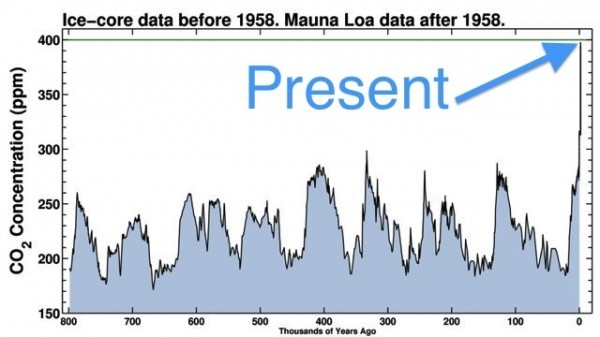In a video produced by the Yale Forum, Raymo talks about her research into past climate. Nothing she sees can explain the changes in climate we are seeing now – in other words, this is not a natural phenomenon, but a man-made one. We’re recreating a Pliocene atmosphere by our burning of fossil fuels (and deforestation, and the release of other “greenhouse” gases that help trap the sun’s radiation, warming the planet).
So what? Consider the climate of the Pliocene: 2 to 3 degrees C higher than now; sea levels 25 meters higher. We’re not there yet, but as Raymo says, the “symphony” of the climate system is catching up. A couple of degrees may not seem like much; but we’re talking about averages that can make a huge difference — between snow or rain, or no rain at all, and permafrost or swampland. The difference between today and the last ice age, when mile-thick sheets of ice covered much of the northern hemisphere, is only about 5 degrees Celsius (or 9 degrees Fahrenheit).
CO2 averaged about 280 parts per million in the pre-industrial era. That we’ve reached 400 parts per million in so short a time has scientists worried.
“On some level, watching these milestones be passed is a lot like watching paint dry,” Jason Smerdon, a climate researcher at Lamont-Doherty Earth Observatory, told Climate Central in a story published Monday. “The upward march is neither surprising nor unexpected as a direct consequence of human activities; it is only alarming in the sense that it keeps happening unabated.”


